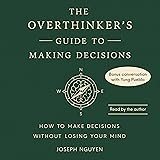Every seasoned trader understands the rush and the meticulous concentration required in live market conditions. The rapid-fire decisions, the subtle shifts in price action, and the omnipresent need for robust risk management are all part of the daily grind. As demonstrated in the accompanying video, live trading Gold futures demands an intricate understanding of market microstructure and the ability to execute with precision. It’s not just about pointing and clicking; it’s about anticipating, reacting, and managing the unexpected, often within mere seconds.
The fast-paced dialogue between the traders highlights the real-time analysis involved in futures trading. They are dissecting specific technical setups, like the M5 gap and fair value gap, which are crucial concepts for navigating volatile markets such as Gold futures. This level of technical acumen is what often separates consistent traders from those who struggle.
Navigating Gold Futures: Deciphering Market Structure
When observing markets, particularly highly liquid assets like Gold futures, traders often focus on specific price behaviors. The mention of an “M5 gap” refers to a price void on the 5-minute chart, indicating an impulsive move where liquidity was bypassed. Such gaps are critical areas of interest for many technically-oriented traders.
Furthermore, the discussion touches upon the concept of “inversing a gap,” meaning the price action returns to fill or completely move beyond the original gap. This can signal a shift in market sentiment or the exhaustion of an initial move. Understanding these dynamics is paramount for entry and exit decisions in day trading.
The Art of Identifying Fair Value Gaps and Volume Imbalances
A “fair value gap” (FVG), often coupled with “volume imbalance,” represents an area on the chart where the market moved quickly in one direction, leaving behind an inefficiency. These are often viewed as magnets for price, indicating where the market might return to “balance” itself. For many professional traders, these imbalances are not mere curiosities but potent opportunities.
In the context of the video, a trader moving their stop just below an M5 fair value gap/volume imbalance demonstrates a classic risk management technique. This strategic placement acknowledges the likelihood of price gravitating back to that zone while also defining a precise point of invalidation for their trade idea. It’s like setting a protective perimeter around a valuable asset.
Risk Management in Live Trading: The Stop Loss Imperative
The mention of setting a stop loss and the subsequent “Order filled” highlight the brutal reality of trading: not every setup works out. Even the cleanest entry can be met with “poor delivery,” where the market fails to follow the anticipated path. This is why a well-defined stop loss is not just a suggestion; it’s an absolute necessity.
A stop loss acts as a pre-determined exit point that limits potential losses on a trade. For experts in futures trading, placing stops is a nuanced art, balancing technical confluence with practical risk exposure. It’s the ultimate insurance policy against unforeseen market reversals or fundamental shifts.
Analyzing “Poor Delivery” and Market Sentiment
The frustration expressed by the trader when a “clean setup” results in “poor delivery” is a shared experience among many day traders. “Poor delivery” describes a scenario where after an initial promising move or a technically sound entry, price action immediately reverses or consolidates unfavorably. It can feel like the market is deliberately going against you, even when your analysis was sound.
This situation often forces traders to confront market sentiment that might be subtly shifting or facing unexpected institutional order flow. It emphasizes that while technical analysis provides a framework, the market is a dynamic entity influenced by a multitude of factors, not all of which are visible on a chart. Adaptability and emotional resilience are crucial when facing such scenarios.
Beyond the Charts: Psychological Discipline in Futures Trading
The short, sharp exchanges in the video also offer a glimpse into the psychological demands of Gold day trading. The moments of elation (“There you go. Nice.”) and disappointment (“Damn. It’s unfortunate.”) are rapid-fire. This emotional rollercoaster underscores the need for profound psychological discipline.
Successful futures traders aren’t just masters of technical analysis; they are also masters of themselves. They understand that emotional responses like frustration or overconfidence can lead to costly mistakes. Maintaining objectivity, adhering to a trading plan, and accepting losses as an inevitable part of the process are foundational elements of long-term success in the competitive world of Gold futures trading.
The ability to say “What are you going to do?” after a loss, and then move on to the next opportunity, is a hallmark of a disciplined trader. It signifies acceptance rather than dwelling on what went wrong, paving the way for clear-headed decision-making in subsequent trades. This resilience is as vital as any technical indicator in the realm of Gold futures trading.











